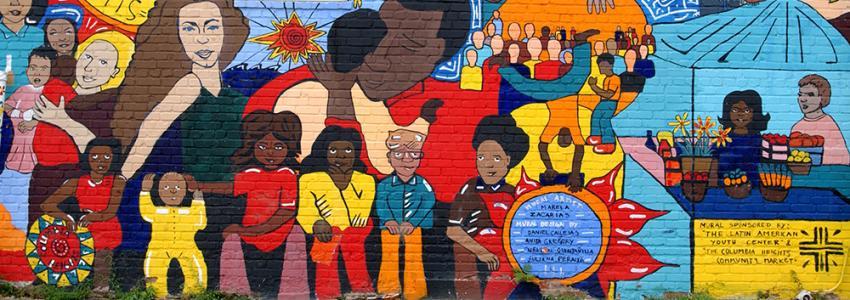In the latest estimates from the U.S. Census Bureau, Americans who self-identified as “Hispanic or Latino” constituted 18.5 percent of the U.S. population, an increase of more than 2 percentage points over the 2010 Census. It is important to note that this “group,” as diverse and multicultural as the U.S. population itself, is not defined as a “race,” even though the Census Bureau includes this portion of the population under the heading “Race and Hispanic Origin.”
The designations Hispanic (referring to Spain) and Latino/Latina/Latinx (referring to “Latins”) are used to define this multi-heritage segment of the population, but these terms are misleading because they are Eurocentric. In truth, individuals who self-identify as Hispanic, Latino, Latina, or Latinx may also identify with a broad range of traditions—from Afro-Caribbean to Southwestern First Peoples to Brazilians and everything between and beyond. Today when we use Latinx, we understand this umbrella term to apply to those who may also identify as white or Black or another race or ethnicity (as well as a range of gender identities). For example, the total self-identified “white” population reported by the Census is over 76 percent, while only 60 percent identified themselves as “white alone.”
As we celebrate National Hispanic/Latinx Heritage Month, September 15–October 15, we celebrate not just one but myriad cultures, achievements, and contributions. Here are a few who brought their rich and diverse heritages to bear on American progress:
- Emma Tenayuca, who got into “good trouble” throughout her career as one of the first Latina labor organizers and workers’ rights activists. At age twenty-one she led 12,000 pecan shellers to strike after they suffered heavy wage cuts. The Pecan Shellers’ Strike of 1938 resulted in pay raises for the workers and was the first major victory for Mexican American labor—both economically and politically. She suffered misogyny, threats of violence, poverty, and arrests throughout her career as a civil rights activist and educator, but as she put it, “I never thought in terms of fear. I thought in terms of justice.”
- Sylvia Mendez, whose rejection in 1943 from an all-white Orange County school prompted her parents to sue the school district. The case, Mendez v. Westminster, was decided in 1947 in favor of school desegregation, predating Brown v. Board of Education by seven years and making California the first state to integrate its schools.
- Dolores Huerta started as an elementary school teacher who saw her kids coming to school hungry and sometimes shoeless. She began by organizing their parents, which led her to become a labor organizer. With César Chávez, she founded the United Farm Workers’ Association and worked to advance the rights of migrant farmworkers in California and the nation from the 1950s through the 1980s. She continues to lobby for workers’ rights, Latinx representation in government, and women’s rights to this day. Huerta is famous for coining the farmworkers’ slogan Sí se puede, Yes we can!

Detail of Hispanic Heritage Select Photos. (David Valdez, hispanicheritagemonth.gov)
These are only three in the vast field of Latinx women who have gifted our society with their talents, insights, and hard work. To learn more about Latinx culture, contributions, and activism, start with Library of Congress National Hispanic Heritage Month and the National Archives Hispanic Heritage Month web pages. For more on the U.S. Census and terms used to refer to Latinx, refer to the Pew Research Center’s excellent article, “Who Is Hispanic?”
—Chris Moose